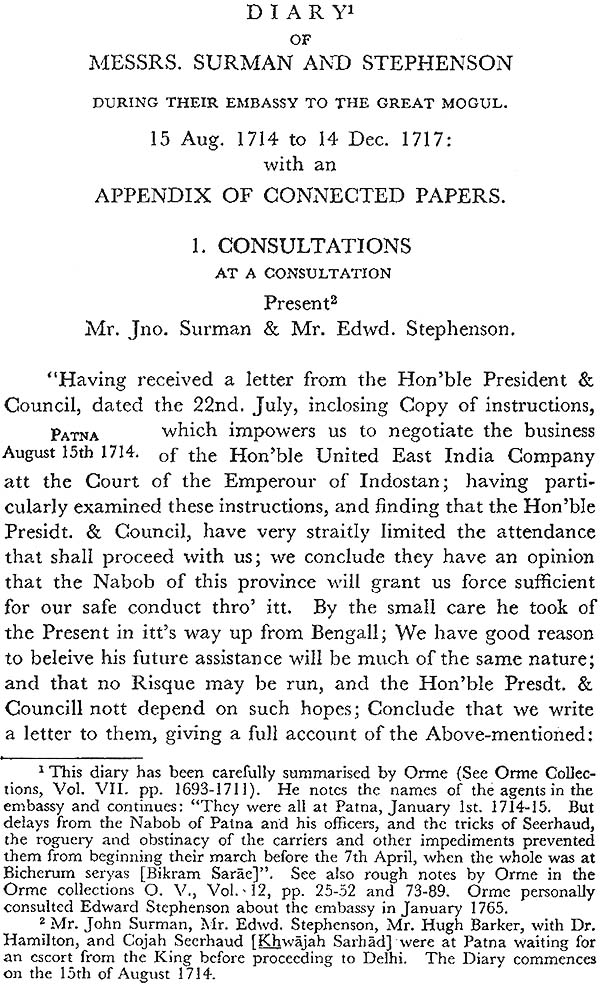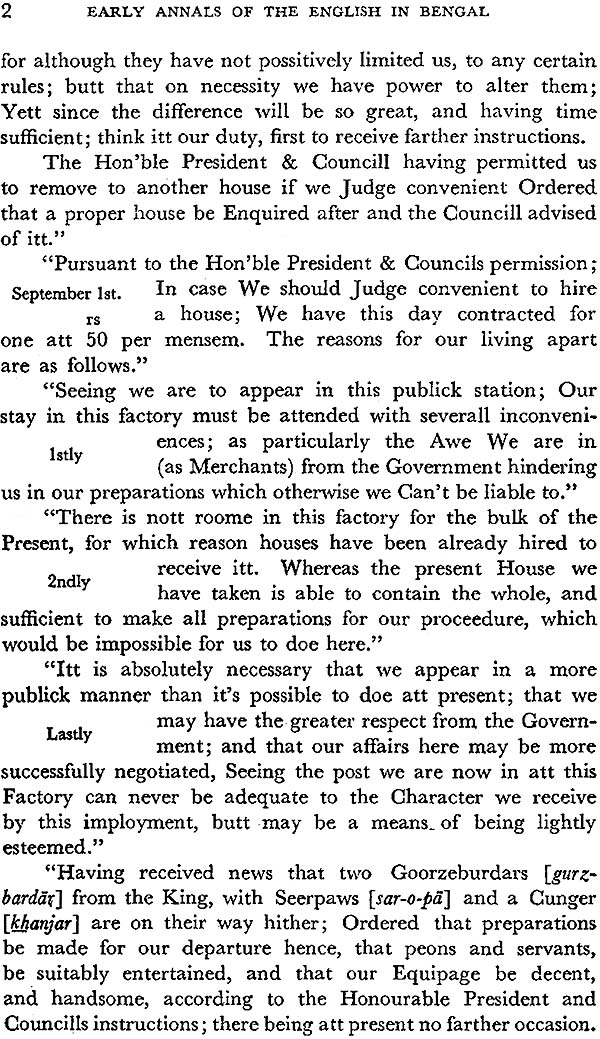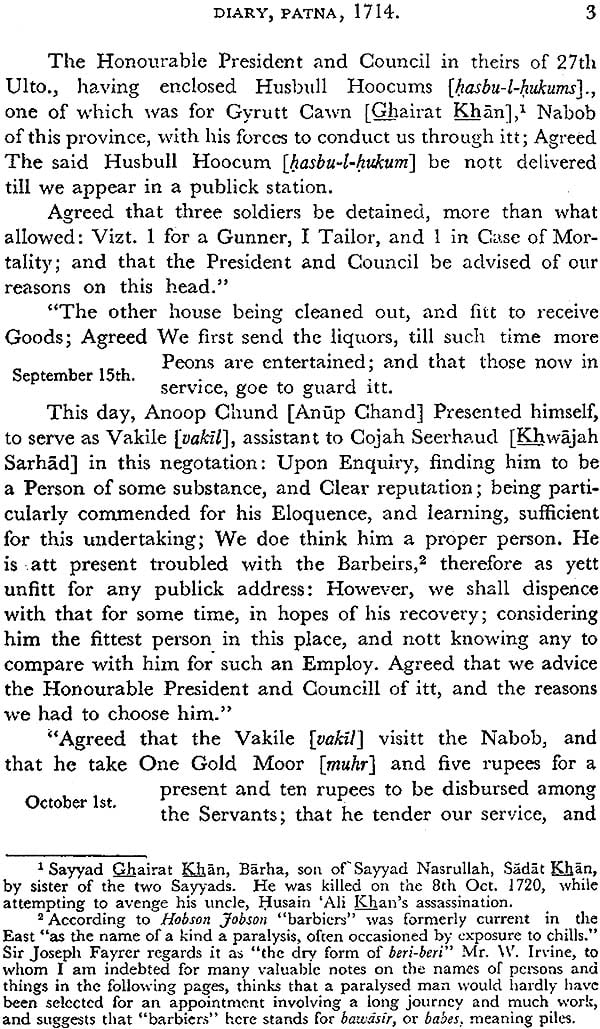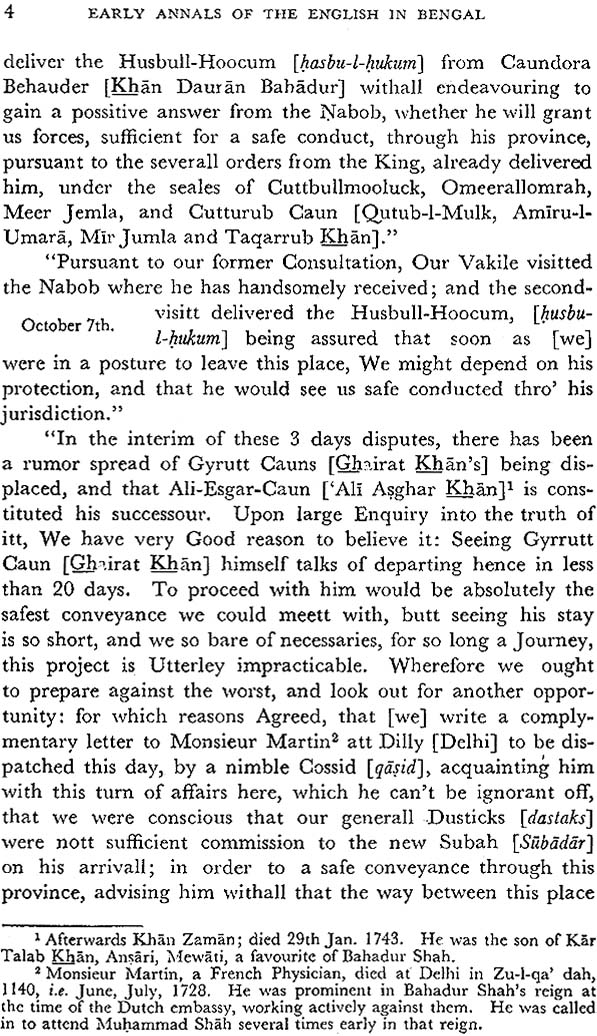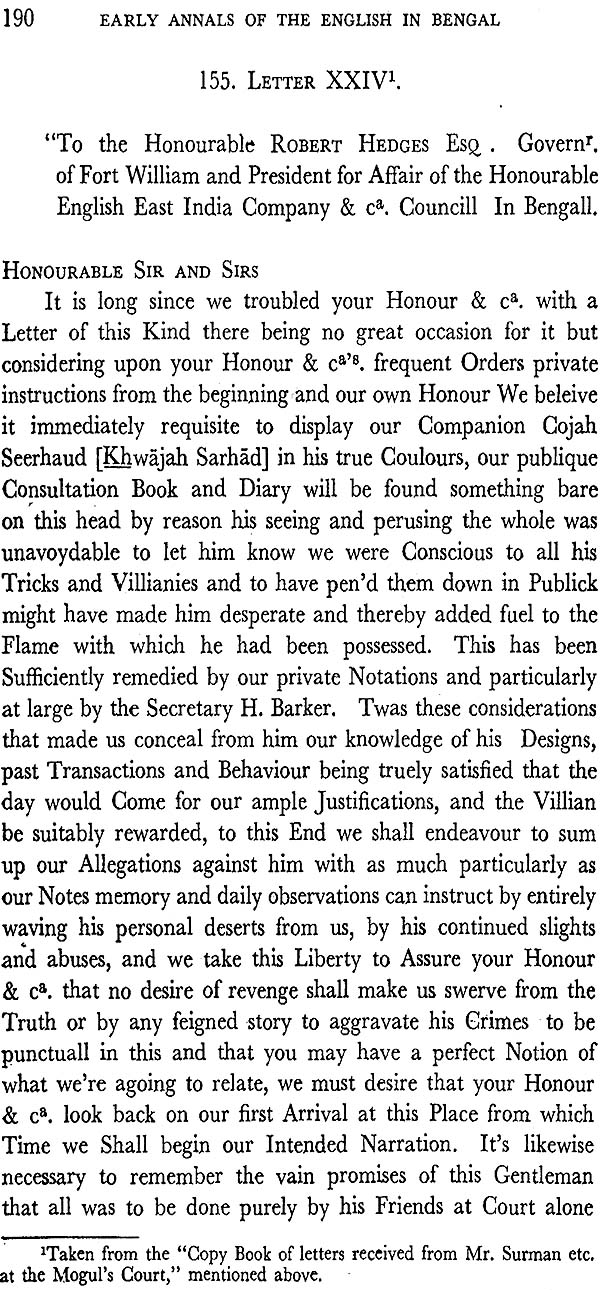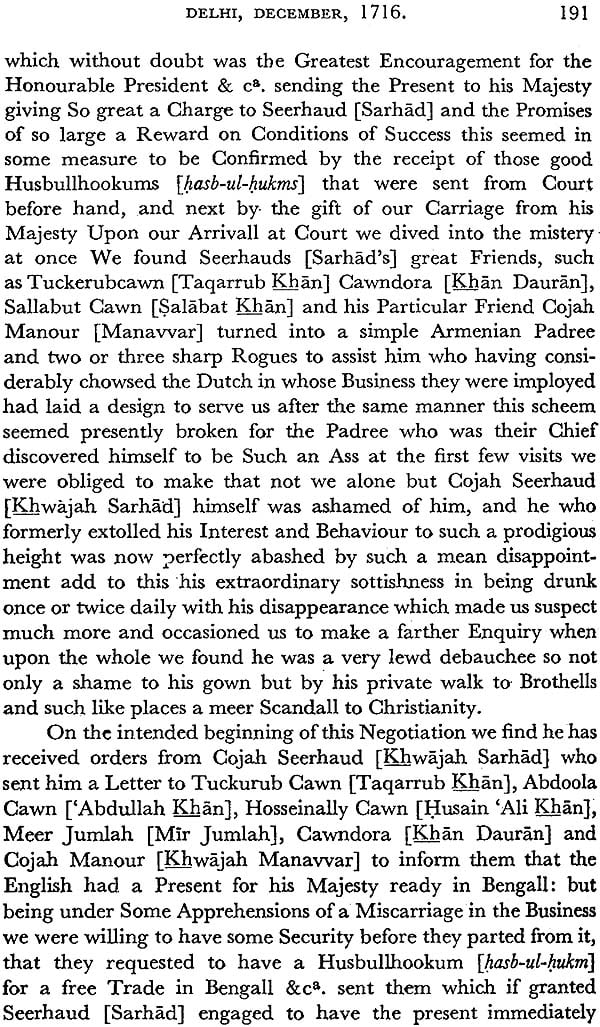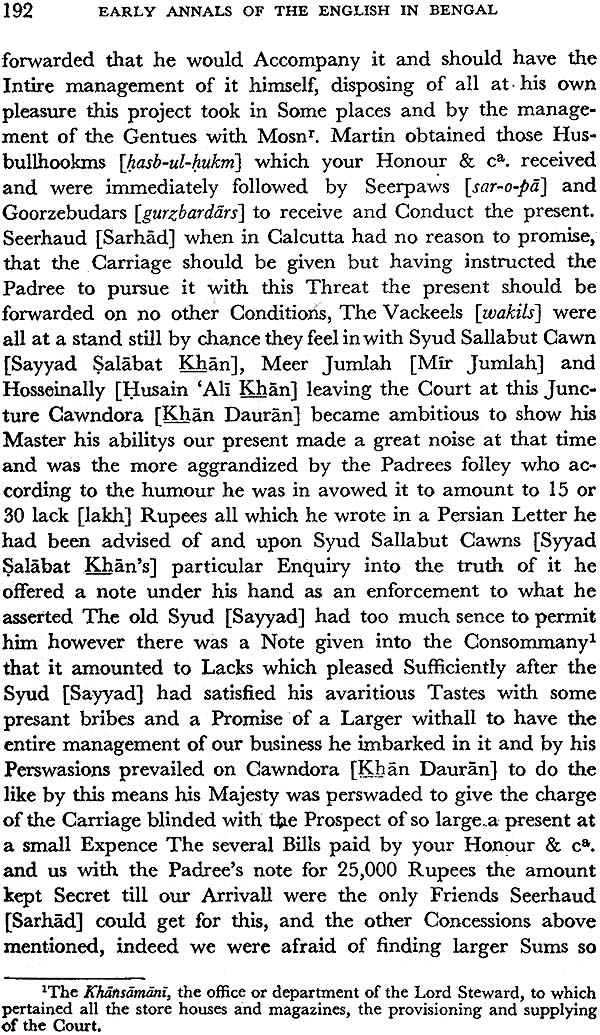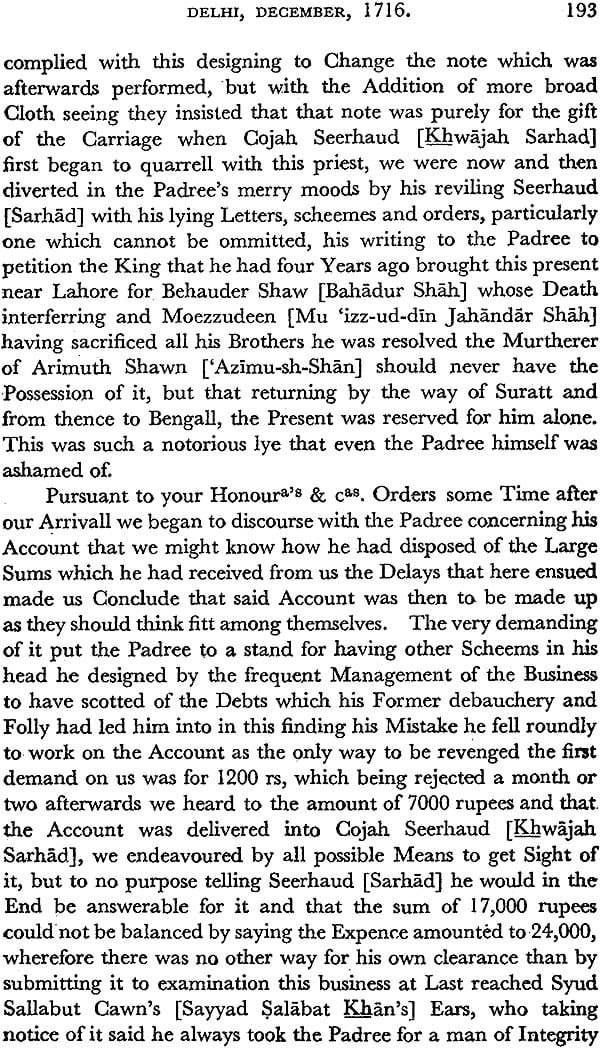
The Early Annals of The English in Bengal (Set of 2 Volumes)
Book Specification
| Item Code: | NAL737 |
| Author: | C.R. Wilson |
| Publisher: | The Asiatic Society |
| Language: | English |
| Edition: | 2014 |
| ISBN: | 9789381574218 |
| Pages: | 923 |
| Cover: | Hardcover |
| Other Details | 9.5 inch x 6.0 inch |
| Weight | 2.40 kg |
Book Description
The Early Annals of the English in Bengal, volume one, written with great efforts by C. R. Wilson, was first published from the Asiatic Society in 1895 and its first reprint edition was released in 1996. In this work, Wilson has dealt with the history of English in Bengal during the early part of the eighteenth century. This period was initially considered as the dark age of the British India, but strenuous searches from the relevant records retained in the India Office and having consulted the research-works made by the earlier historians, Wilson could procure adequate information regarding the history of the rule of the British people over Indian territory. For the purpose of gathering information, Wilson made hurried visits to England and succeeded to copy extracts from India Office.
The first part of volume two was published in 1900, the second part in 1911 and it was reprinted in 1963. Now the complete set (Vol. I and Vol. 2) is being reprinted.
Wilson himself collected many new materials and possessed also old ones and having consulted all these informative documents, he constructed the historical effects of British Supremacy in India, specially in Calcutta-centred Bengal. During early years of the eighteenth century the British, settled in India as commercial people, were pot aware as to how they would emerge as conquerors. In solution to this stage of uncertainty amongst the British merchants, Wilson has tried to draw their history in Bengal from 1663. The present British historian has presented us with a long series of events resulting in the British conquest of Bengal, nay India.
We are confident that this reprint of C. R. Wilson's illustrious book would help modern scholars to make themselves equipped with a lot of rare information regarding a very important part of the modern history, i.e., the British conquest of India.
In the present volume, and in those which are to follow, I propose to do two things.
In the first place, I propose to publish extracts from the records preserved in the India Office which deal with the history of the English at Calcutta during the first half of the eighteenth century. This period is the dark age of British India. Thanks to the researches of Bruce, and still more recently of Sir Henry Yule, a considerable amount of information is available as to the history of the English in Bengal up to the first years of the eighteenth century. From this point hardly anything is known till we reach the year 1748, at which date Long began his selections from the records of the Government of Bengal. There is thus a gap in our knowledge of Calcutta history, which needs to be filled up.
In the second place, out of the new materials which I shall publish and the old which we already possess, I propose to construct the history of the English in Bengal.
It is the duty of the scientific enquirer to show the causes of every event. Is it not then strange that we are still without any adequate explanation of one of the greatest events of modern history, the English conquest of India? That conquest was the necessary result of a long series of changes which preceded it, but of this we have no demonstration. It remains not so much a subject of careful study as a matter for wonder, wonder the child of ignorance.
The history of British India has yet to be written. We have yet to understand why the English conquered India and not the Portuguese, French, or Dutch. 'N e have yet to understand why it was from Bengal, not from Madras, or Bombay, that the English dominion took its rise. And we have yet to understand the necessary connection between the stages of the English advance into Bengal.
Undoubtedly a necessary connection does exist. Every step is bound up with its antecedent and consequent steps according to those invariable laws of development which the genius of Hegel has discovered and explained.
'I'he first period in this history lasts from 1633 to 1660, during which the English take up a position in Bengal, aiming at nothing more than commerce under the protection of the Indian Government.
This moment in the development is of necessity followed by its contradiction. In the period from 1661 to 1685 English industrialism finds itself opposed by militarism. The English merchants are hampered by quarrels with the native powers, by quarrels with interloping rivals, by quarrels among themselves. At the end of this period we reach the extreme antithesis of the first position taken up by the English. Instead of trusting to their own peaceful intentions and to the promises of the Indian Government, they resolve to establish themselves in Bengal by force.
In the period lasting from 1685 to 1690 the English in Bengal are in a state of flux. They wander from one policy to another policy, and from one station to another station. At last after repeated trials, they return to Bengal at the invitation of the Nabob and form a fortified settlement at Calcutta, thereby in a measure satisfying the claims both of industrialism and of militarism.
In the fourth period, which begins from 1690, the settlement thus reached takes definite shape. English trade is established in Bengal partly through the good-will of the inhabitants and with the acquiescence of the native government, and partly by the powerful position which the English had acquired. They command the sea, they dominate the river traffic from Patna to Saugor, and behind the river they are safely established at Calcutta.
Is it too much to say that these four stages are connected together in a necessary sequence? Is it fanciful to see in them the aein, nickts, werden, and dasein. of English commerce in Rengal?
In this volume I publish summaries and extracts from the Bengal Public Consultations for the years 1104 to 1710 and in the introduction I have given the history of the English in Bengal up to and including the period covered by these records.
Resident as I am in India, only able to pay brief hurried visits to England, I have myself not been able to do more than read through the records in the India Office, indicate w hat extracts should be made, and verify IDX printed copy by comparison with the original. The actual copying out of the extracts was undertaken for me by my friend, Miss Stievenard, who was good enough to devote many months to the work, and to whom consequently I can never be sufficiently thankful.
In writing the introduction I have received much assistance from Sir W. 'V. Hunter, from Mr. C. W. C. Oman, Fellow of All Souls College, Oxford, from .Mr. J. Wells, Fellow of Wadham College, Oxford, and from Mr. E. M. Wheeler, Senior Tutor of Bishop's College, Calcutta, all of whom were so good as to read "through my proofs and made many valuable suggestions.
I am also greatly indebted to Babu Gour Das Bysack for my knowledge of the Setts and the By sacks, and of many other points in the local history of Calcutta.
For the sake of clearness I have illustrated my text with a number of rough explanatory maps and plans. The geography of Bengal is constantly changing, and there are no accurate maps of the country before those made by Rennell at the end of the eighteenth century. Under these circumstances it is obvious that plans of places in the sixteenth and seventeenth centuries must be to a certain extent conjectural. I have done my best to base my plans on the most reliable data, and here too I have been much helped by various friends in clearing up local topographical details.
Finally, my thanks are due to the Secretary of State for India in Council for allowing me to have access to the records in the India Office and to publish extracts from them, to the officials in charge of the records for courteous assistance of every kind, and to the Government of Bengal forgiving me permission to use the Secretariat Press.
PART I.
The Consultations Books for the years 1711 to 1717, with an introductory account of Calcutta under the rule of Weltden, Russell, and Hedges, and biographical and other illustrative addenda.
In this, the first part of the second volume of the Early Annals of the English in Bengal, I deal with the history of the English in Calcutta under the administrations of Anthony Weltden, John Russell, and Robed Hedges, giving extracts and summaries from the Consultations books for the years 1711 to 1117. The second part of the second volume will deal with the Surman embassy.
At the time of Mr. Wilson's unexpected death in 1904, the present volume was in an advanced state of preparation. Even the introduction had been printed, with the exception of the last two chapters; and fortunately the manuscript of the unprinted portion was found among the author's papers. As a student of the same period of Indian History, and one who took a sympathetic interest in Mr. Wilson's work, I share the opinion of the surviving members of the family that so much valuable material, the fruit of great labour, strenuous research, ought to be made available for those interested in the subject. Difficulties arose which have caused regrettable delay; these having now been overcome, I have been asked to contribute a few words by way of preface.
Charles Robert Wilson, M.A., D.LITT., born in London in 1863, was educated at the City of London School whence, on gaining the Carpenter Scholarship, he proceeded to Oxford. There he won an open scholarship at Wadham College. In 1886 he graduated with first class honours in the Final Schools. Soon after taking his degree, he entered the Indian Educational Service. He began his work in 1887 as Professor at Dacca College, and in 1895 was transferred to a similar position in the Presidency College at Calcutta. For some years he was Principal of the Government College, Bankipur (Patna), and then acted as an Inspector of Schools. In all these positions he acquired the confidence of his superiors and the respect of the students. At the time of his death he was the Officer in charge of the Records of the Government of India. For many years he enjoyed excellent health, arid seemed destined to carry to completion a career so successfully commenced. At last the Angle-Indian's most insidious enemy, malaria, fastened upon him, and in spite of visits to Darjeeling and Ceylon, he was unable to shake it off. As a last resource he was sent home; but it was too late. He died in London on July 24th, 1904, at the early age of forty-one.
Allowing for his comparatively short life, most of it passed under the constant pressure of arduous official duties, Mr. Wilson's literary output was considerable; nor was it of a light or perfunctory nature, the mere amusement of a cultured mind's idle hours. It involved laborious hunting among dusty manuscripts and singular perseverance in following up and unravelling the most unpromising clues. Wilson during his annual trips to Europe must have visited nearly every part of England in pursuit of exact biographical details about the earlier Anglo-Indian worthies, whose names appear in the records he was studying. No trouble seemed to him too great to secure this object. The result is before us, and he is assured of a permanent place in the small band of similar seekers, along- side of Talboys Wheeler, A. T. Pringle, J. M. Campbell, E. T. Atkinson and G. W. Forrest.
For he evidently held, as many others do, that for the time being the available sources for the purely literary treatment of history have been exhausted. To secure any profitable extension of our knowledge, at any rate in the Indian field, we must devote ourselves to the consultation of original records. Like C. R. Wilson, we must strive at sifting, arranging and publishing the documents. It is the only way in which we can get a little nearer to the past and thus in the limited degree which is possible, learn the truth about it. In short, history must be first dealt with as a science, a record of facts, before any attempt can be made to turn it into literature or a branch of Belles Lettres. The merits of Wilson's work in this direction have been recognized by his University, which granted him his Doctorate in Literature, as he told me himself, after an examination founded on his own "Early Annals of the English in Bengal".
So far as known to me he is the author of the following:
(1) Articles on the site of the Black Hole of Calcutta printed in the Journal of the Asiatic Society of Bengal.
(2) List of the Inscriptions on Tombs or Monuments in Bengal, foolscap folio, Calcutta 1896.
(3) "The Early Annals of the English in Bengal," Vol. I, 1895, Vol. II, Part I, 1900.
(4) "Old Fort William in Bengal" in the "Indian Records" series, 1905, 2 volumes 8 (Murray).
He also wrote an article on Bibi Juliana in the Indian Church Quarterly Review for October 1900, and contributed several articles to the Journal of the Asiatic Society of Bengal in Calcutta.
In the Journal of the Royal Asiatic Society for January, 1897, I inserted a review of the first volume of his "Early Annals of the English in Bengal". This appreciation of his book led to Mr. Wilson seeking me out on his next visit to England. From that time I received an annual visit from him and we maintained a constant correspondence on the subjects he was interested in. In this way I came to see the continuation of the "Early Annals" in proof and was able to contribute information from native historians and other sources which was not accessible to the author, being outside the limits of his special studies. The topographical notes to the "Surman Diary" are mostly by Mr. Wilson, while the rest were directly or indirectly furnished to him by me.
The volume now published, forming volume 2, Part 11, of the "Early Annals of the English in Bengal" is devoted to the story of the Mission sent by the Company's officials in Calcutta to Farrukhsiyar, the Great Mogul. It is compiled from the Consultations of the Government at Calcutta, the Diary kept and Consultations recorded by the Envoys, and copies of their letters to the three presidencies. These different series of documents are taken in chronological order and combined into one continuous narrative. In this way it becomes possible for the first time to follow the development of events beginning with the instruction, of July 1715, down to the conclusion of the Mission and its arrival in Calcutta in December, 1717. Some of the letters and proceedings have been printed by. J. Talboys Wheeler in his "Early Records of British India" (Calcutta, 1879); but that fragmentary narrative will be entirely super- seded by Mr. Wilson's compilation. The main points of the story, with their appropriate historical background, are admirably set forth in Mr. Wilson's full and lucid introduction, to which nothing need be added here.
The "Diary" is interesting for more than one reason. It is an almost photographic picture of an Oriental court, seething as usual with intrigue and a mere battle ground of personal ambitions. We also obtain an insight into its perverse ingenuity in prevarication and procrastination. The record also makes us acquainted with a sturdy Englishman, John Surman, who though young in years and untried in great affairs rose nobly to his responsibilities. We see, too, how difficult it is for the European and the Eastern man to work together on a footing of equality. Sarhad, the Shifty Armenian, if left to himself, might have succeeded by his own devious ways; on the, other hand, Surman would certainly have done better if unhampered by Sarhad as a colleague. Placing the two men together on such a footing was a fatal mistake, and but for Surman's dogged persistence, this would have entirely wrecked the enterprise. The much-abused Wazir, Qutbul-Mulk, Sayyid 'Abdullah- Khan, is also shown in an unexpectedly favourable light; for instead of resenting the Envoys' long neglect of him, he acted, when at length applied to, with unusual vigour, showed no sign of offended dignity, and above all demanded nothing for himself.
On every ground I heartily commend this book to the notice of all serious students of Indian history.
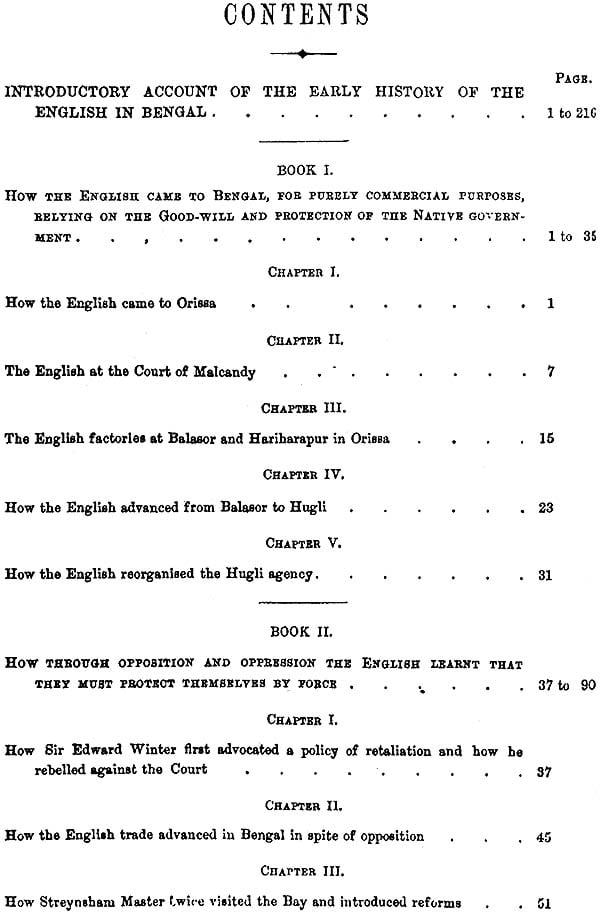
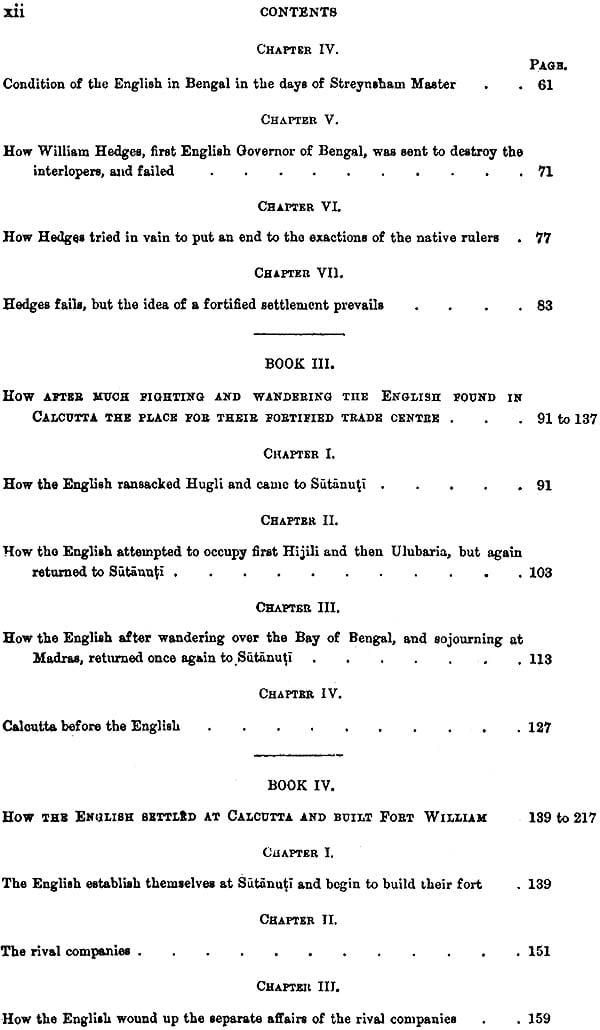
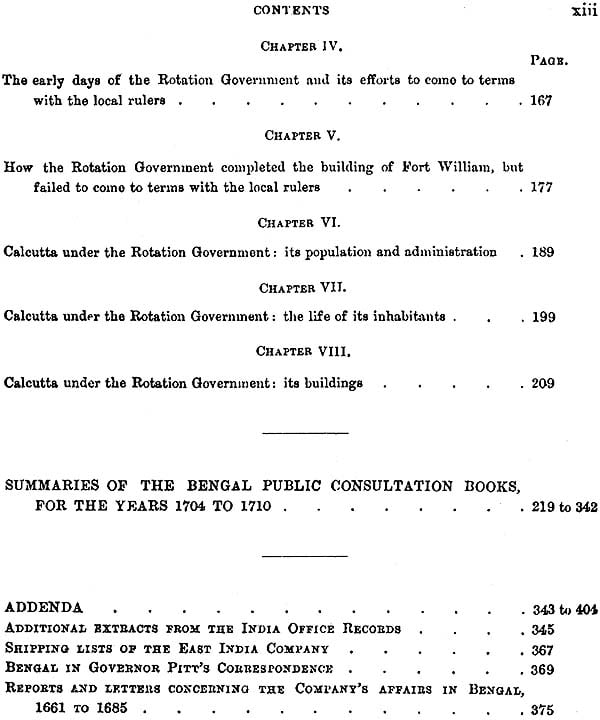
Part I
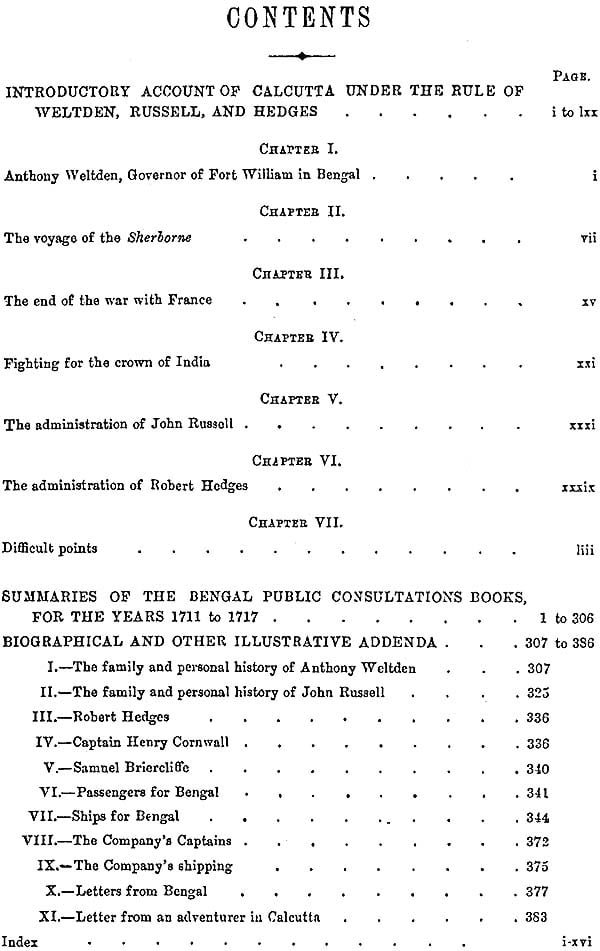
Part II
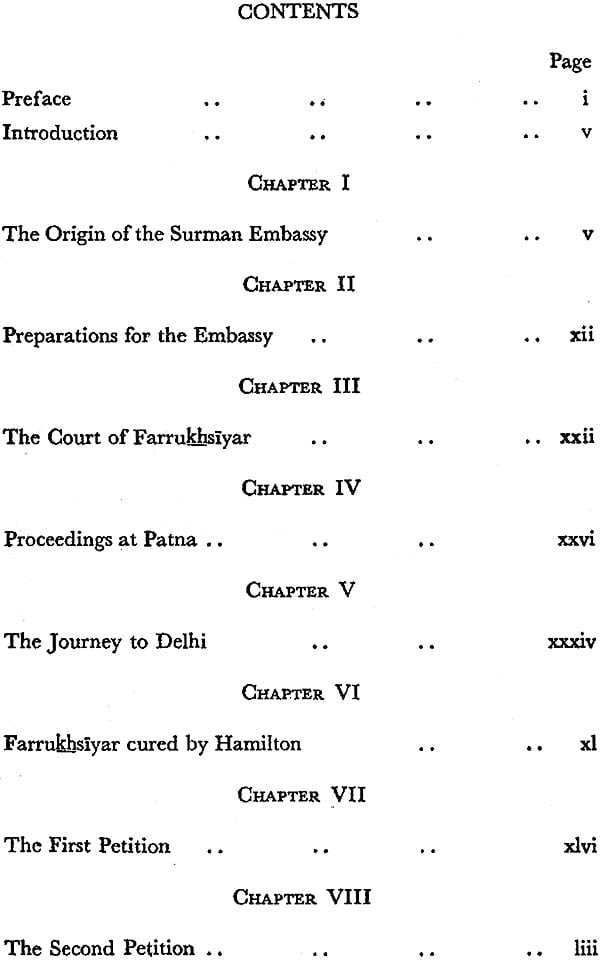
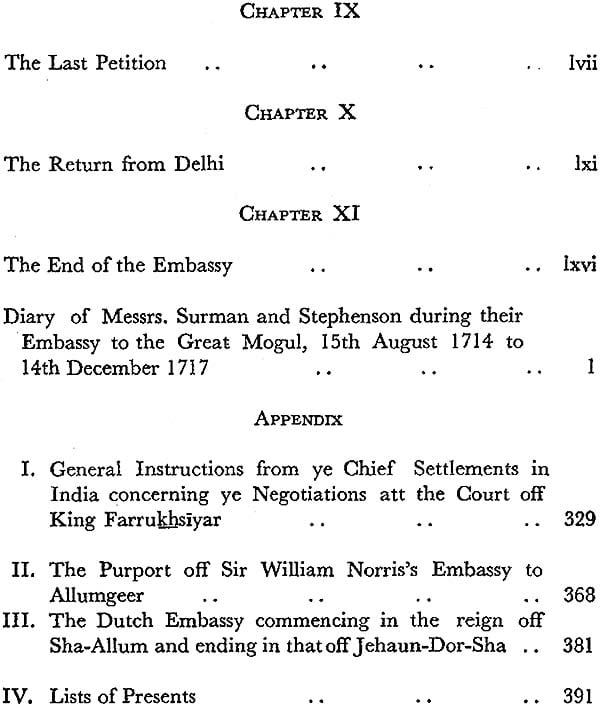
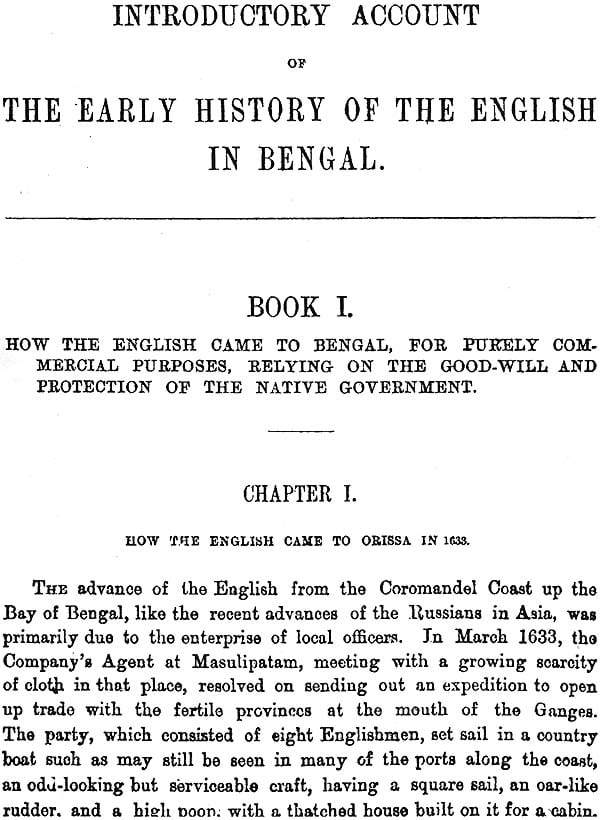

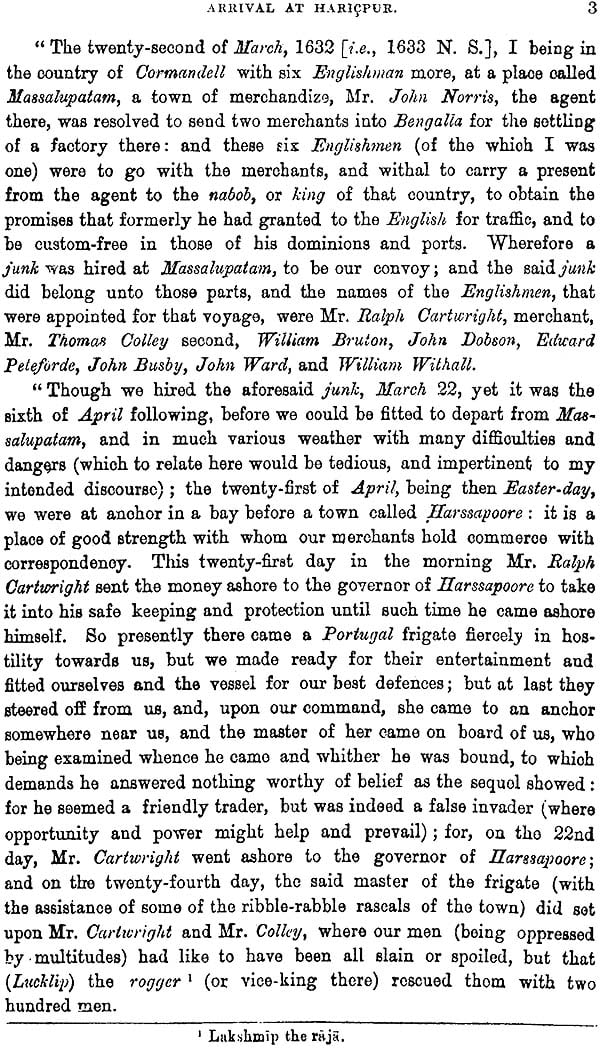
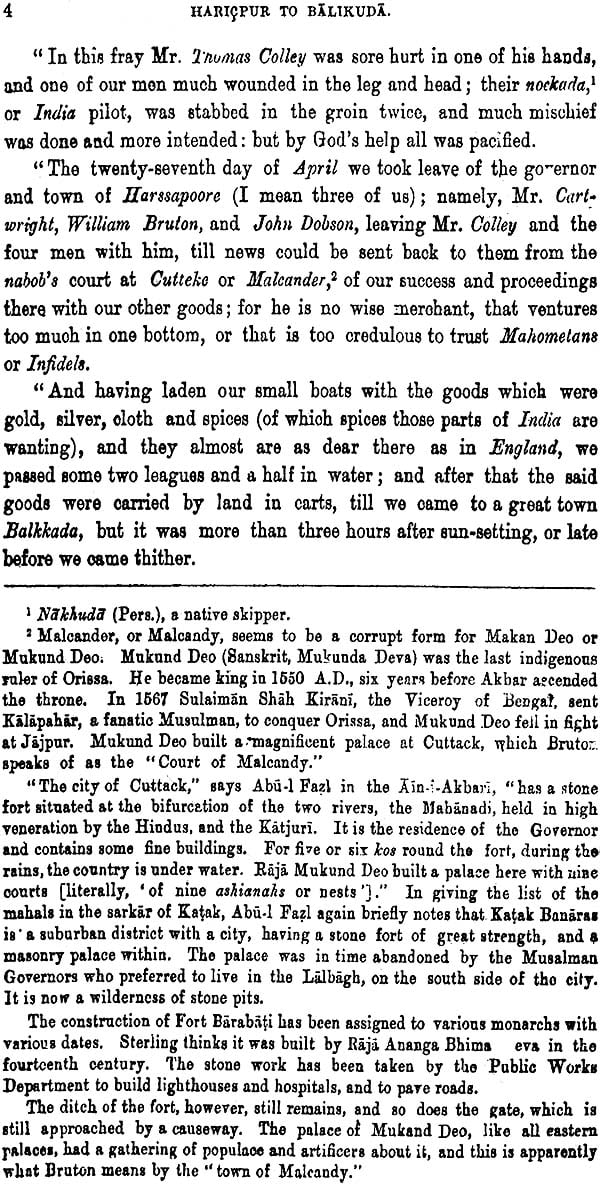
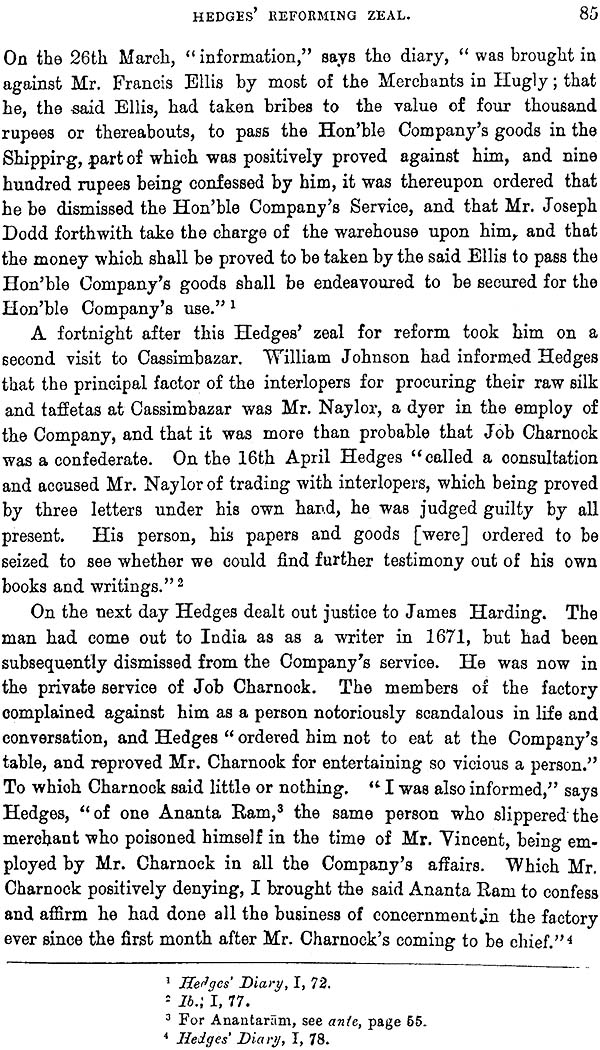
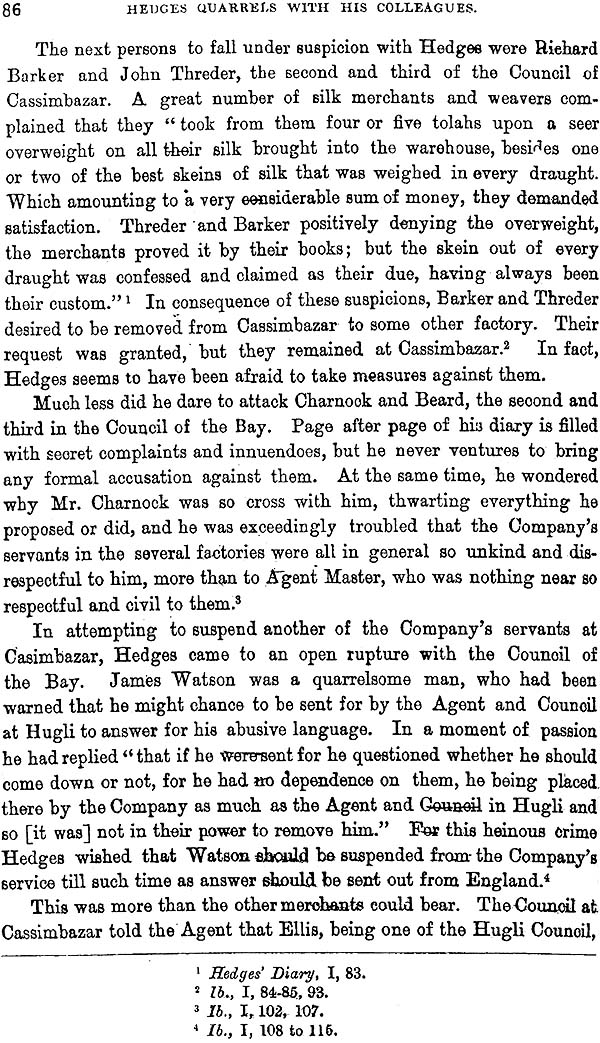
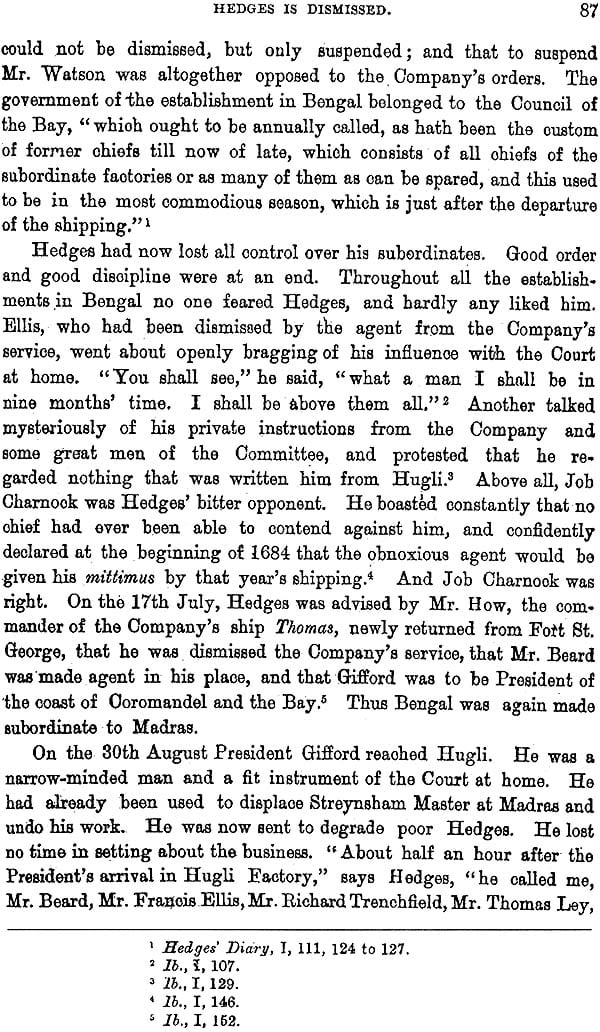

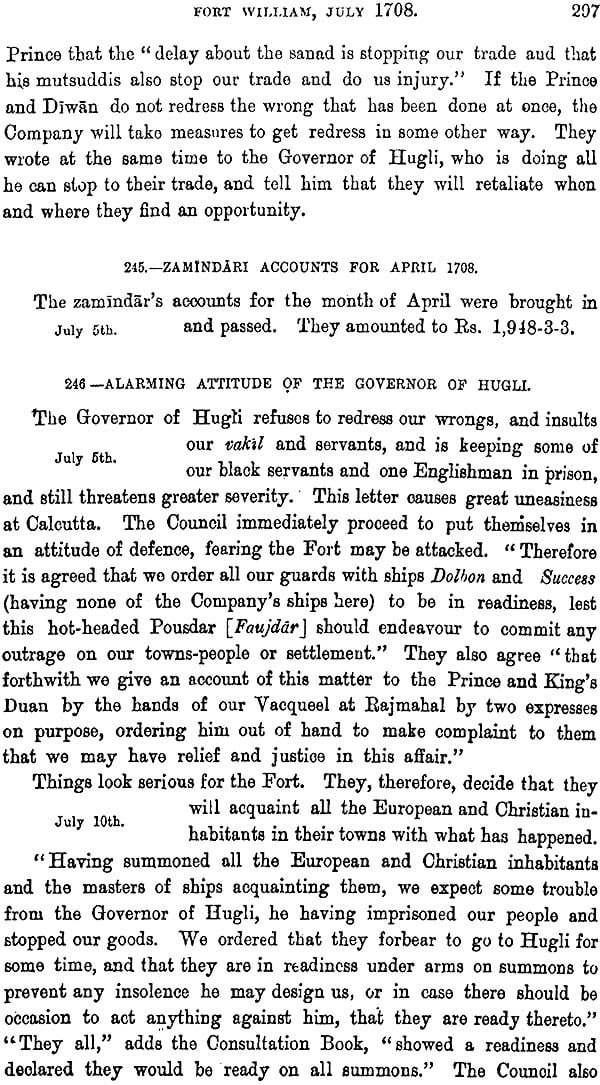
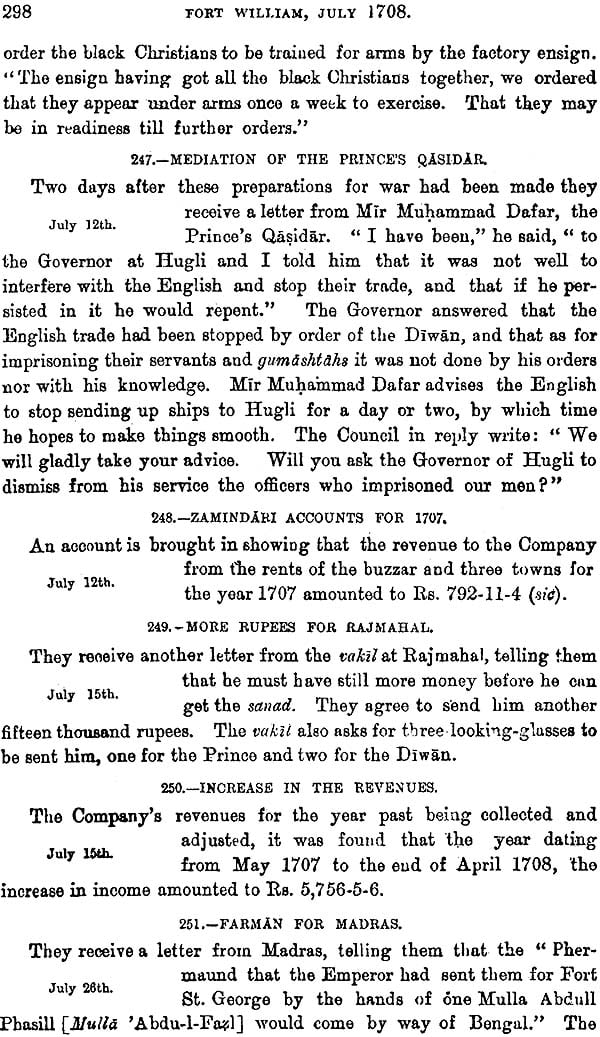
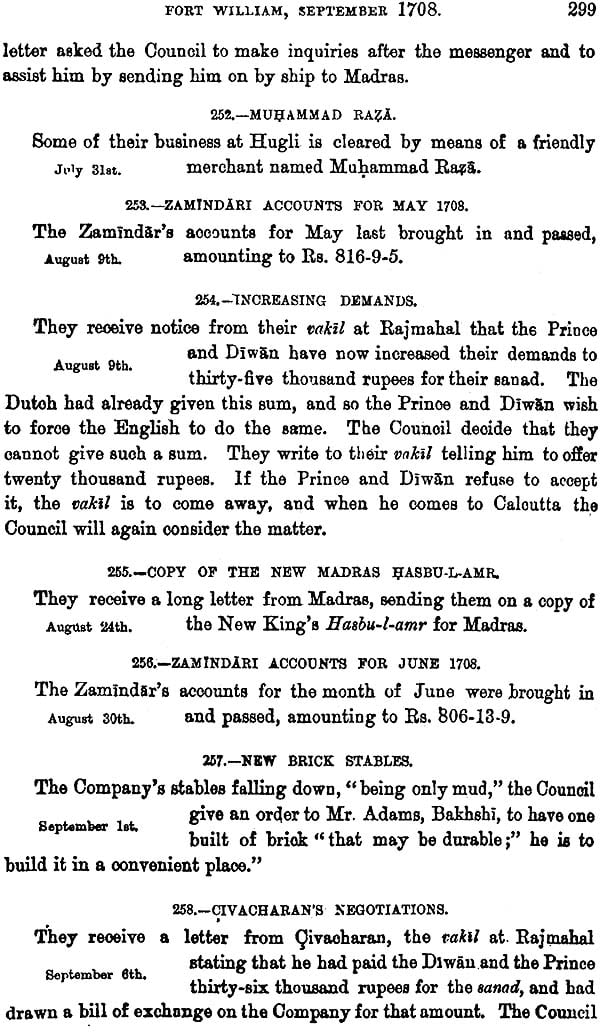
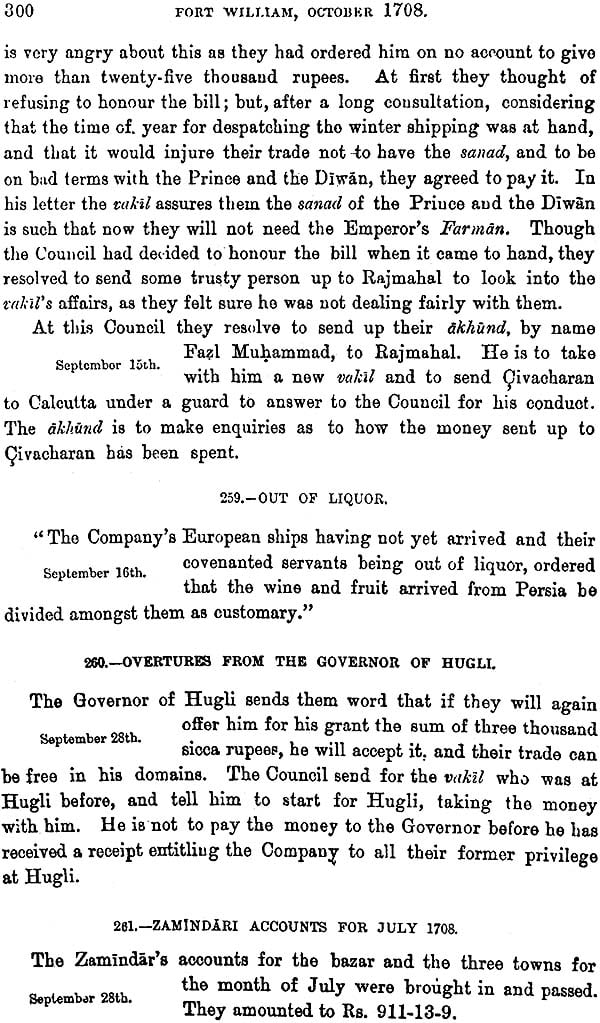
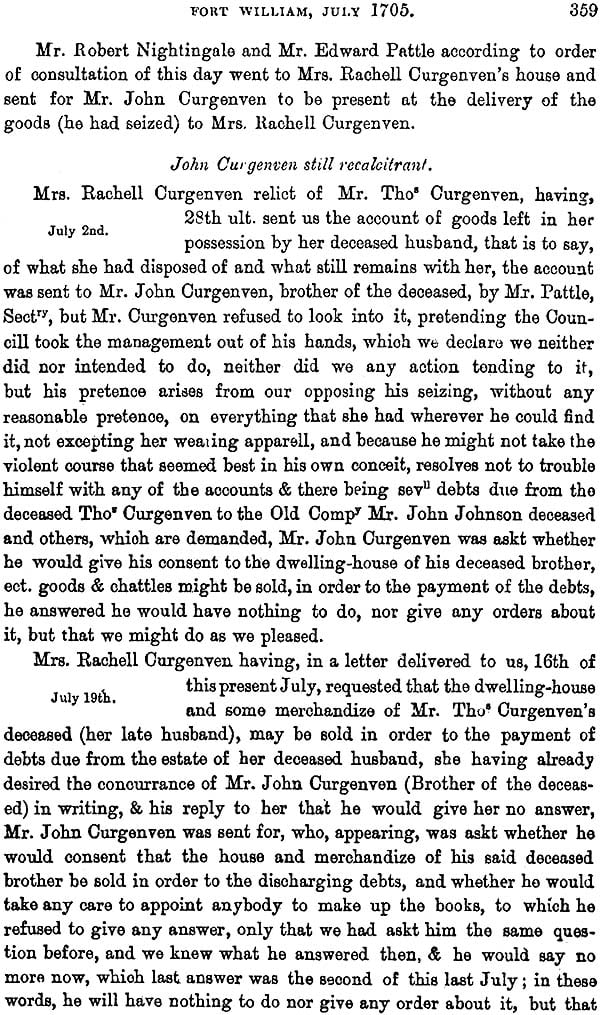
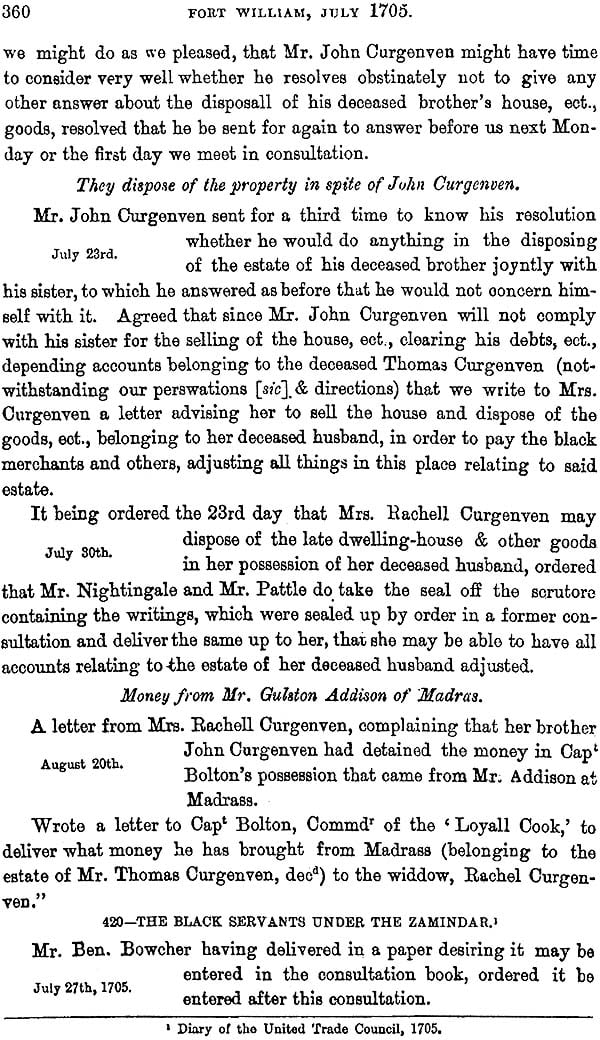
Part I
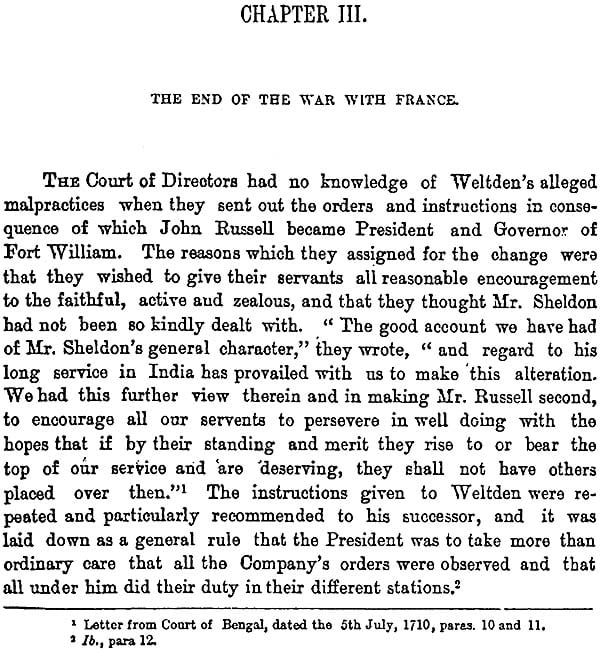
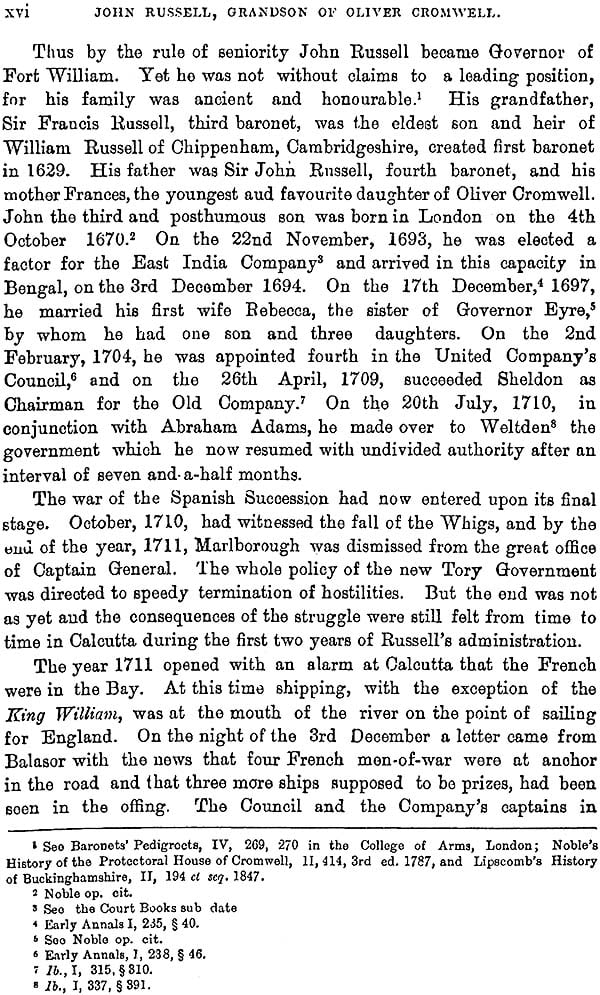
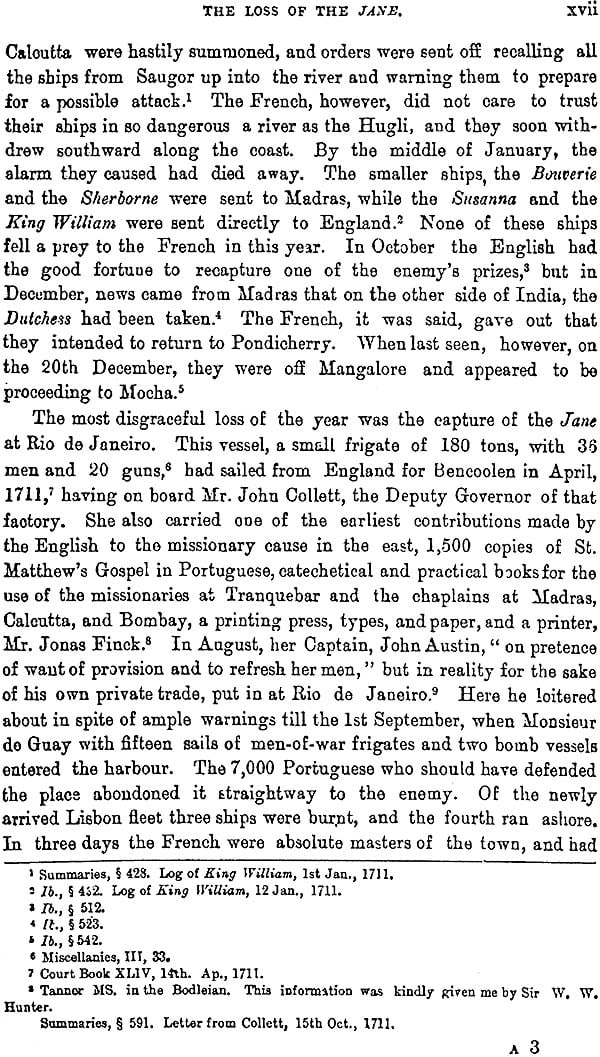
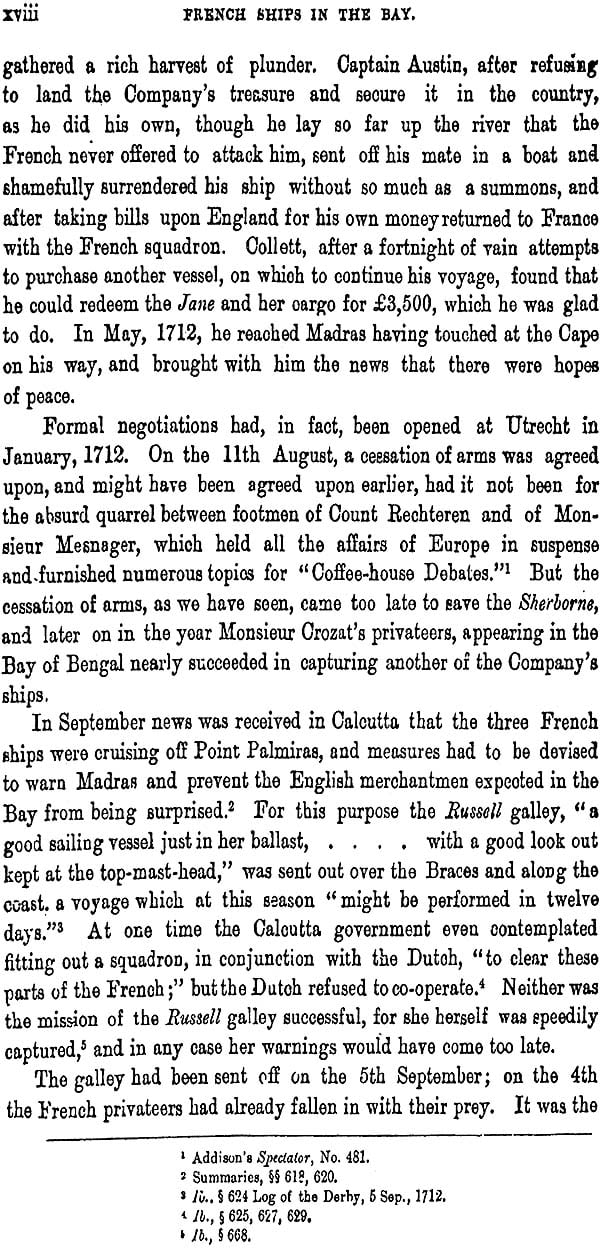

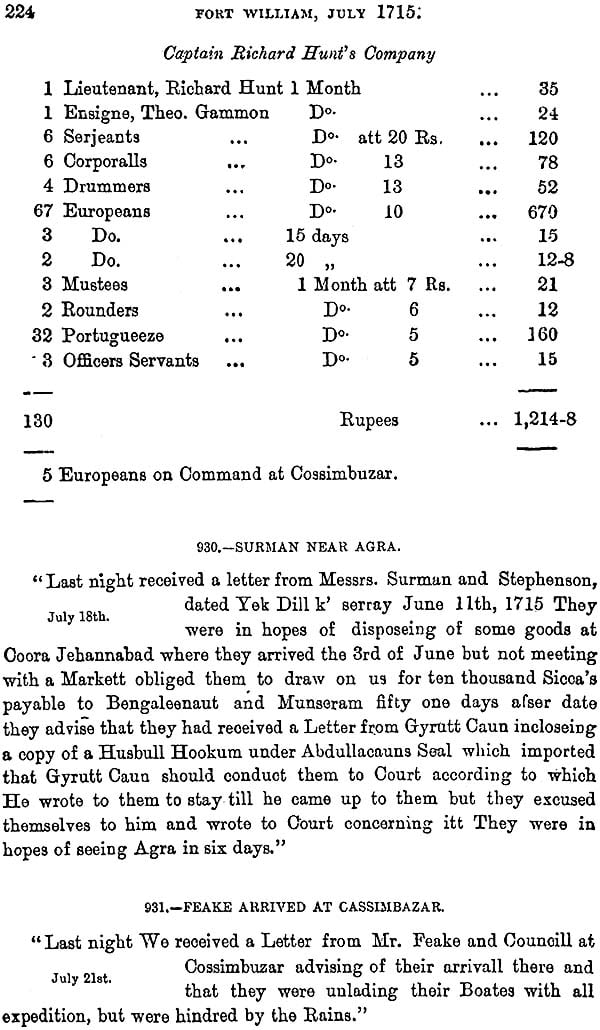
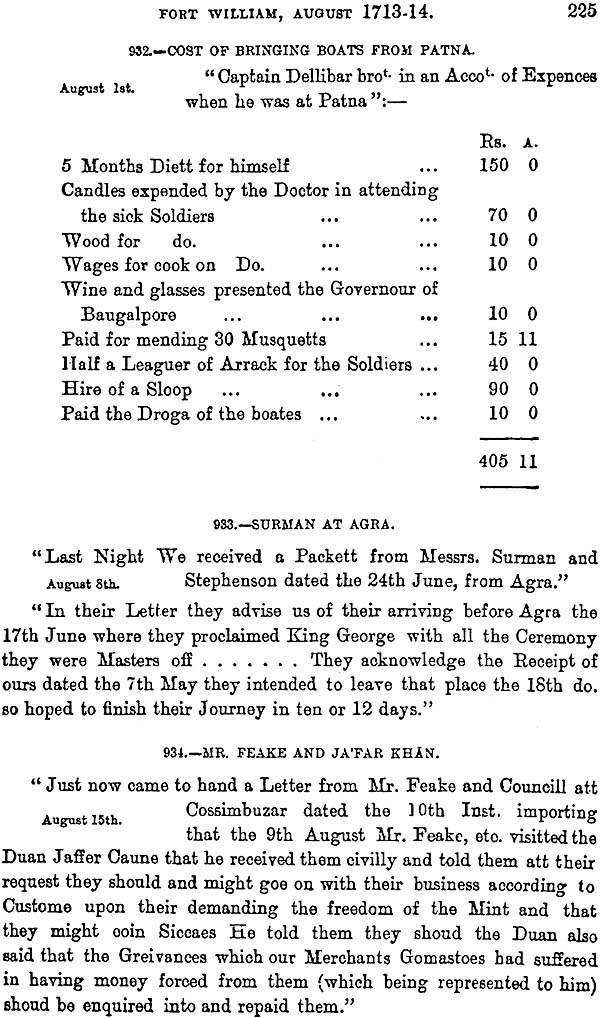
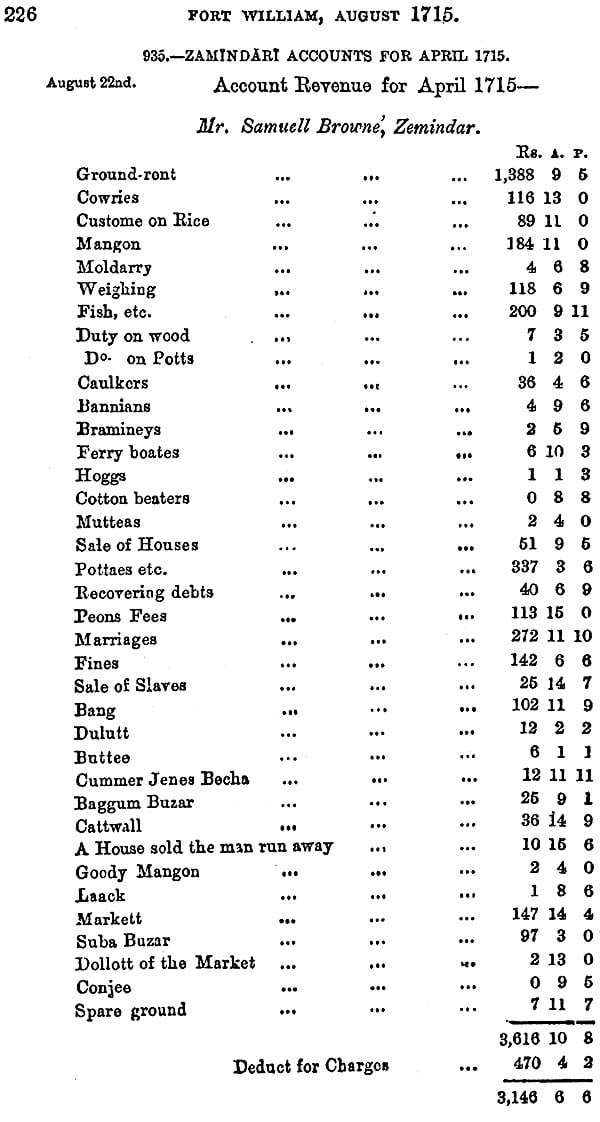
Part II
